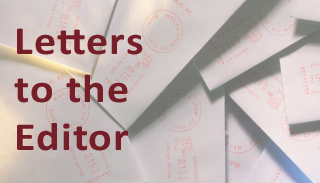 The tech world turned a page last week with the announced launch of the speed-reading app Spritz. As this CBC article describes, the Spritz app will move e-text on the screen so that your eyes don’t have the chore of moving. Instead of average reading speeds of 200-300 words per minute, Spritz users can look forward to reading up to 1000 wpm.
The tech world turned a page last week with the announced launch of the speed-reading app Spritz. As this CBC article describes, the Spritz app will move e-text on the screen so that your eyes don’t have the chore of moving. Instead of average reading speeds of 200-300 words per minute, Spritz users can look forward to reading up to 1000 wpm.
Not every reader is excited. Jian Gomeshi of CBC radio expressed doubts about the new app in his March 13 opening essay on the popular radio show “Q.” “Surely,” Gomeshi mused, “the nuances of human communication and most certainly of literature require a little…inefficiency; a little space to think and to feel; to consider and reconsider.” With electronic words flashing by at an unvarying speed, what will happen to the opportunity for reflection that reading at your own pace provides?
While a faster pace helps keep the reader’s attention centered on their reading,
I won’t be lining up for the new Spritz app. There are free reading techniques that increase speed without sacrificing reflection and comprehension. Here are a few:
Follow your finger. Once thought to be the mark of a slow reader, following your finger through text can actually speed your reading. The movement of your finger pulls the eye along at the rate your finger (or pen or other device) is moving, encouraging greater speed. The challenge of keeping up with your finger forces a focused alertness.
Skim across the top of words. Most of the visual clues in the letters of each word are contained in the top half. You can test this by covering the bottom half of a line of text. In most cases, the text is perfectly readable with only the top visible. Your eyes move through text more quickly when you don’t try to focus on full letters. It takes practice to train your eyes to skim across the top half of the words, but you’ll increase your speed substantially.
Read phrases, not words. It’s estimated that meaning is contained in as little as 4 to 11% of the text. Your eyes can take in more than one word at a time, especially since many words are only there to make key words look good. Instead of moving your eyes from word to word, broaden your field of attention and move from phrase to phrase. You’ll take in more information with fewer eye movements, allowing you to move through text more quickly.
Minimize sub-vocalization. Do you hear the words in your head as you’re reading? This is sub-vocalizing and it slows you down as you mentally enunciate each word. Sub-vocalizing is useful when you’re first learning to read, but it’s a habit you can discard once you’ve mastered reading. Alternatively, you can sub-vocalize selectively by mentally “saying” only the key words you wish to emphasize.
Read the first sentence and skip through the rest. In academic texts, the most important point is often contained in the first sentence of each paragraph. Read the first sentence, then let your eyes skip through the rest of the paragraph. Search out key words and points, then move on to the next paragraph. This technique is useful for research as well as a pre-exam final overview of material already read in detail.
Scan vertically. One of the harder speed-reading methods to learn, scanning vertically involves moving your eyes down the page instead of across each line. Using your fingers or a small piece of paper, move your hand down the page and let your eyes follow. If you’ve mastered the “read phrases, not words” technique, you may be ready to take in each line’s critical information at a glance. Remember that most words play a supporting role and your eyes don’t need to focus on them to understand the starring words.
Most reading techniques require practice to master. Different techniques may be more suitable for some types of reading than others. Reading for comprehension often requires reviewing information several times. It’s beneficial to vary the reading method on each read to avoid mentally zoning out (like you do when you drive the same route to work every day.)
One advantage of these techniques is that you’re in control. You can dive in and read in greater detail when necessary, and you can pause for reflection or to re-read an important point. You can speed up, slow down, or change techniques?whatever suits you for what you’re reading in the moment.
Whichever way you read, a minute or two of mental preparation will help you focus. Taking a few deep breaths and reminding yourself of what you’re going to read and why gives a focused purpose to your reading. Sitting comfortably?upright with both feet on the floor?improves your attention. Reading with a slight smile on your face causes your pupils to dilate, which improves your ability to absorb information (and if nothing else, it will make people wonder what you are up to.)
A bit of practice to update your reading skills can improve both your speed and comprehension. And you don’t need an app for that.
Barbara Lehtiniemi is a writer, photographer, and AU student. She lives on a windswept rural road in Eastern Ontario


